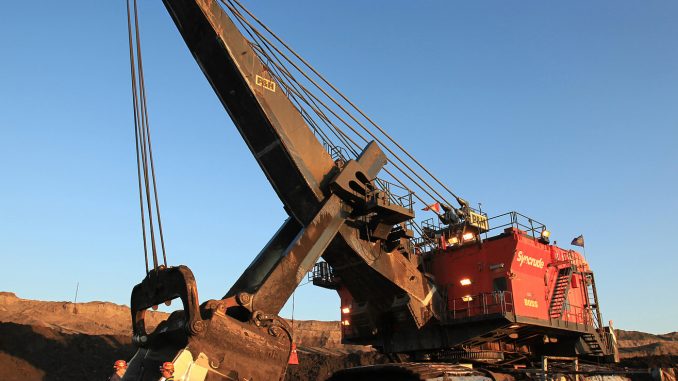
Canada oil sands importance to heavy oil markets rises, though constrained pipeline infrastructure will weigh on investment decisions, according to IHS Markit. Syncrude photo.
Production growth from the Alberta oil sands will moderate in the near-term because of constraints in the existing pipeline system and delays to new projects – such as Trans Mountain Expansion – according to a new study from IHS MarkIt.
The oil sands will experience large production growth through 2019 followed by more modest, steady growth through 2027, according to the new 10-year production forecast, which calls for production to rise more than half a million barrels per day in 2019 and up to 1 million b/d higher by 2027 compared to today.
Canadian oil sands have gained importance to the heavy oil market as the only source of material supply growth in the world for that type of crude.
Output from other large producers of heavy oil—most notably Venezuela, where production has fallen by more than one million barrels per day in recent years and is expected to fall further—has declined.
Despite this increased prominence in heavy oil markets and higher oil prices in recent months, the new outlook still expects production growth to moderate after 2019, similar to previous IHS Markit expectations for oil sands production.
“Pipeline constraints have exacerbated price discounts for Western Canadian heavy oil relative to global benchmarks. Over the past 12 months alone, the difference in price compared to a barrel of West Texas Intermediate (WTI) has fluctuated just under $10 per barrel to more than $30,” said Kevin Birn, executive director, Oil Sands Dialogue.
“This sort of price volatility is weighing on investment decisions in western Canada and will likely continue to do so until greater certainty can be achieved.”
The strong growth in the near term is expected to come from the completion of projects sanctioned prior to the oil price collapse, the revival of some deferred projects as well as some new investments in capital efficiency projects.
Following 2019, uncertainties related to much-needed infrastructure – particularly pipeline takeaway capacity – point to a deceleration of growth, IHS Markit says.
Nevertheless, the IHS Markit outlook does continue to project growth in part due to the unique nature of oil sands projects, which do not experience production declines meaning that any incremental investment can add to existing production and contribute to growth.
This represents a strategic advantage for oil sands asset owners coming out of a low-price period in that there is no production deficit to overcome.
IHS Markit also expects greater crude-by-rail movements to help pick up the slack in the interim and for new pipelines to be built eventually.
“Over the long term, the timing of the new pipelines will be key,” Birn said.
“Even when greater certainty on infrastructure is achieved, it will take time for the impact of subsequent investment decisions to play out on production growth because of the lead time involved in oil sands development. The current growth trajectory was a long time in the making, it has taken a time to slow, and it will take time to recover.”


Be the first to comment